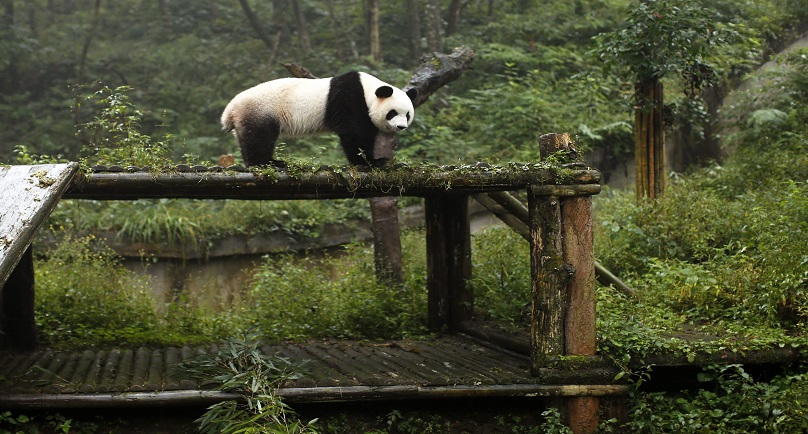Image: A giant panda stands inside its enclosure at the Bifengxia panda breeding centre in Ya’an, Sichuan province, in China, in this file photo from September 22, 2014. REUTERS/Benoit Tessier/Files
By Will Dunham
WASHINGTON (Reuters) – In pandas as in people, it appears that passion prevails.
Scientists studying captive breeding of the endangered bamboo-eating bears said on Tuesday pandas are far more likely to mate successfully and produce cubs when they show through a complex series of behaviors a preference for a potential mate.
When giant pandas in captive breeding experiments displayed no such preference, despite being deemed genetically suitable as a pair, their chances of successfully mating dropped to zero.
“Incorporating mate choice into conservation breeding programs could make a huge difference for the success of many endangered species breeding programs, increasing cost-effectiveness and overall success,” said conservation biologist Meghan Martin-Wintle of the San Diego Zoo Institute for Conservation Research.
The study involved more than 40 pandas at a conservation and research center in China’s Sichuan province. Pandas were put in large open-air enclosures where they could choose between two potential mates.
When both a male and a female showed a preference for each other, there was about an 80 percent chance they would produce a cub. When one of the two showed a preference for the other, there was about a 50 percent chance they would produce a cub.
When neither showed a preference for the other, there was a zero percent chance for a cub.
The pandas showed interest in potential mates through behaviors such as vocalizations called “chirps” and “bleats,” and “scent-marking” by rubbing glands against a surface or object. Females showed their angiogenital region to males, put their tails in the air and walked backward toward males. Males performed a handstand against a vertical surface and urinated.
“We learned that, just as in humans, breeding signals are complicated,” Martin-Wintle said.
Conservation breeding programs act as a fail-safe against extinction, providing animals for reintroduction to the wild to bolster dwindling populations. Pandas, remaining in the wild in only a few Chinese mountain ranges, have proven tricky to breed in captivity.
“Pairs are selected to maximize maintenance of genetic diversity in the panda population. This is essential for maintaining healthy populations, and currently we have no problem with this,” said Ronald Swaisgood, the institute’s director of applied animal ecology.
“However, there are often several candidate mates that are genetically suitable, and we believe that behavior and mate choice has a role to play for improving the success rate of breeding among genetically suitable partners.”
The research was published in the journal Nature Communications.
(Reporting by Will Dunham; Editing by Peter Cooney)
Copyright 2015 Thomson Reuters. Click for Restrictions.


